Troika explores Boundaries between Nature and Artifice
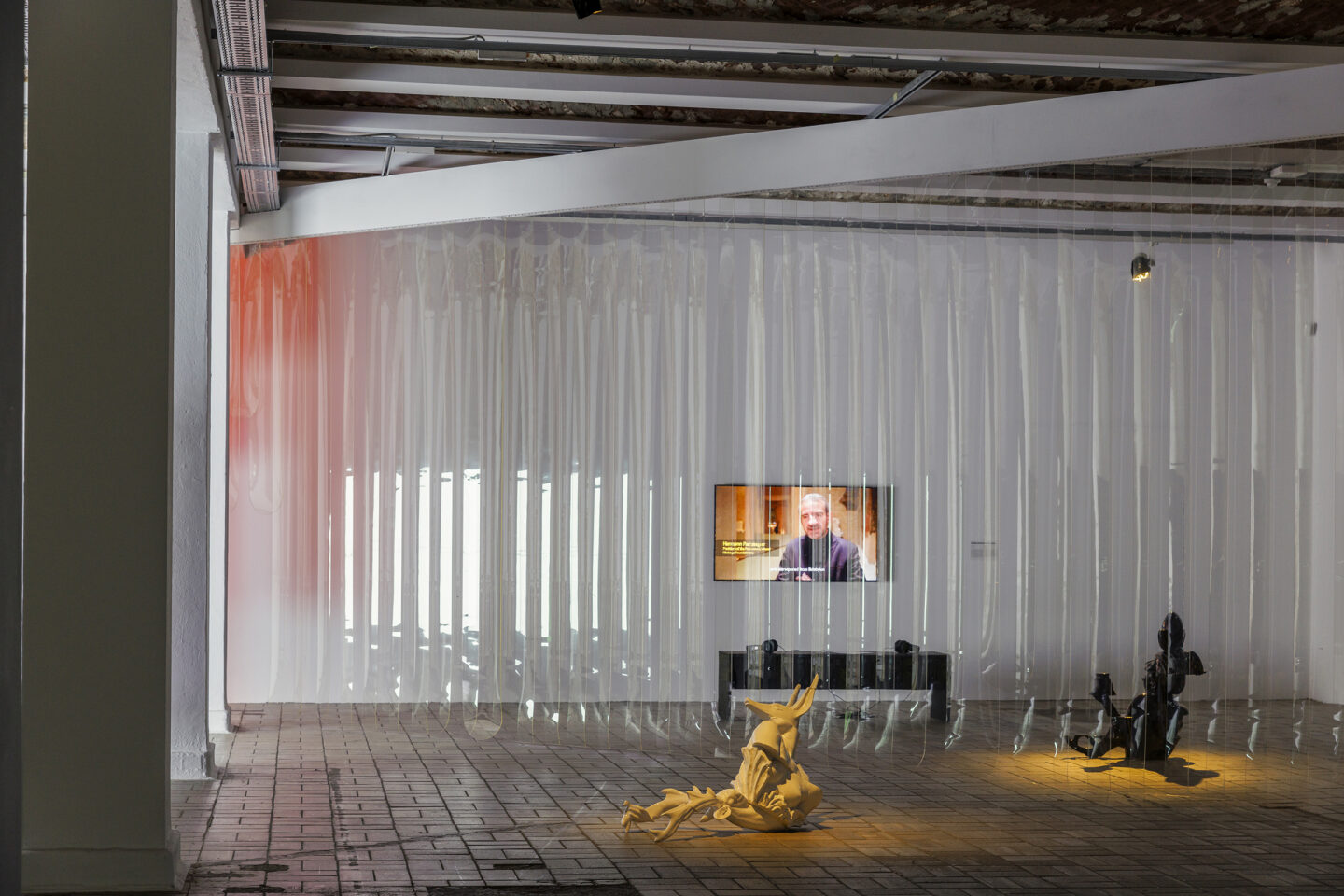

The contemporary art collective Troika was formed in 2003 by Eva Rucki (*1976, Germany), Conny Freyer (*1976, Germany) and Sebastien Noel (*1977, France) and is expanding within the art world through their view on modern technology and its implementation in our understanding of nature, humans and society.
We are honored to present an exclusive interview with Troika, giving us an insight about their inspirations, experimental materials and what to look forward to in 2024.
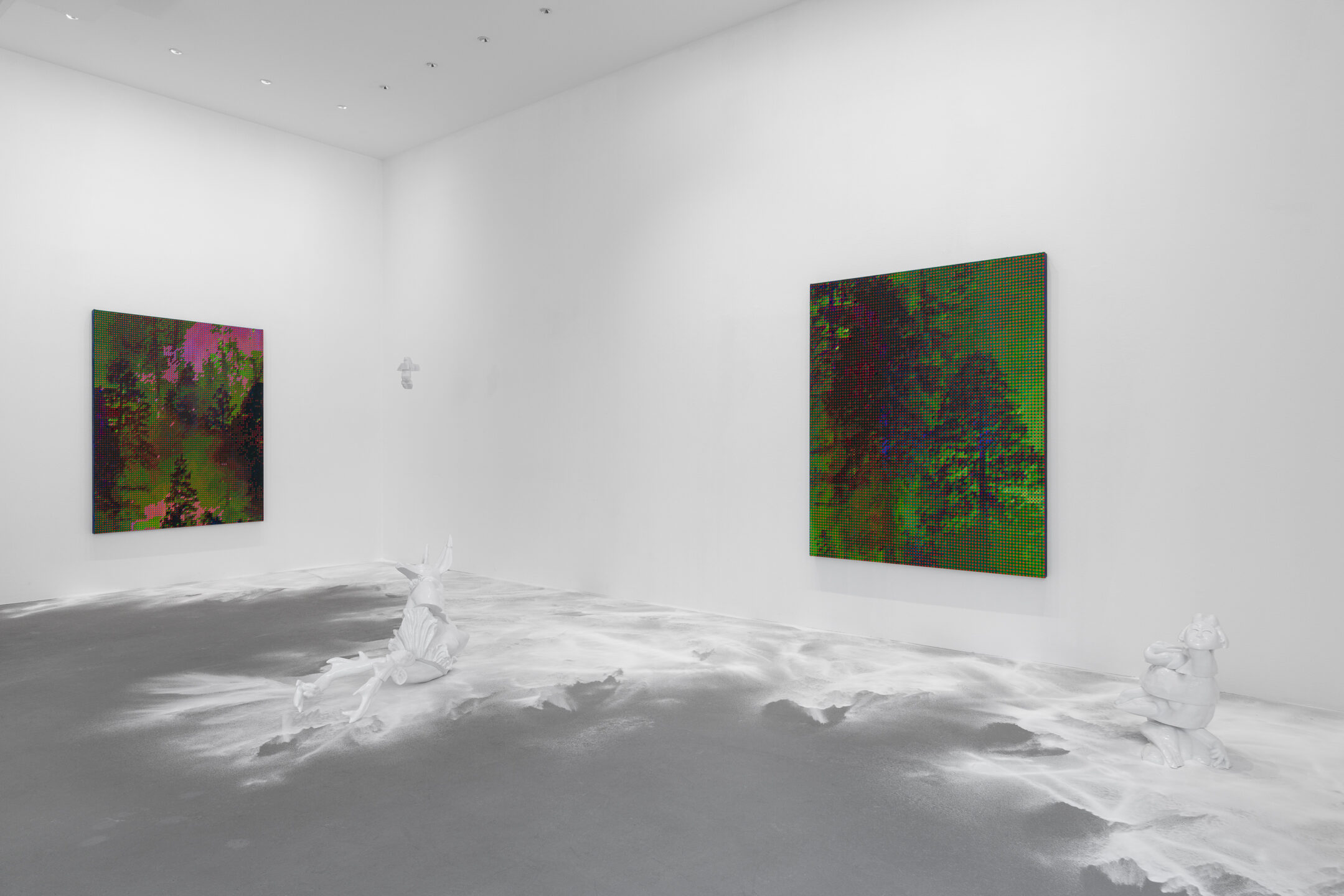
Installation view: in a forest of red, green and blue, 2023. Courtesy of max goelitz. Copyright the artists
Photo: Dirk Tacke
You have been working together as a collective for over 20 years now. How did you decide to work together? And is there a specific process while creating?
Initial project-based collaborations and a shared interest in making sense of a complex, often contradictory world grew organically into an ongoing way of working. It is a constructive argument that has been shaped and evolved over time.
We are interested in how and if a single entity, view, or discipline can attain a full image of reality. This interest manifests in how we work as a group and in our work.
The media you use for your artworks is diverse and experimental. It expands from paintings and sculptures to film, but also algorithms, 3D-print or machinery. What interests you within those diverse types of media and what is the motivation behind experimenting with them?
The way we use materials and processes in our work could be described as a conscious misreading and reconfiguring of objects and processes to open them up to alternative readings.
Working in a collective whose members have varied academic and cultural backgrounds helps us keep an open mind to the possibilities that failures and mistakes might present. Each one of us has different sensibilities and tunes into different layers of meaning and potential.
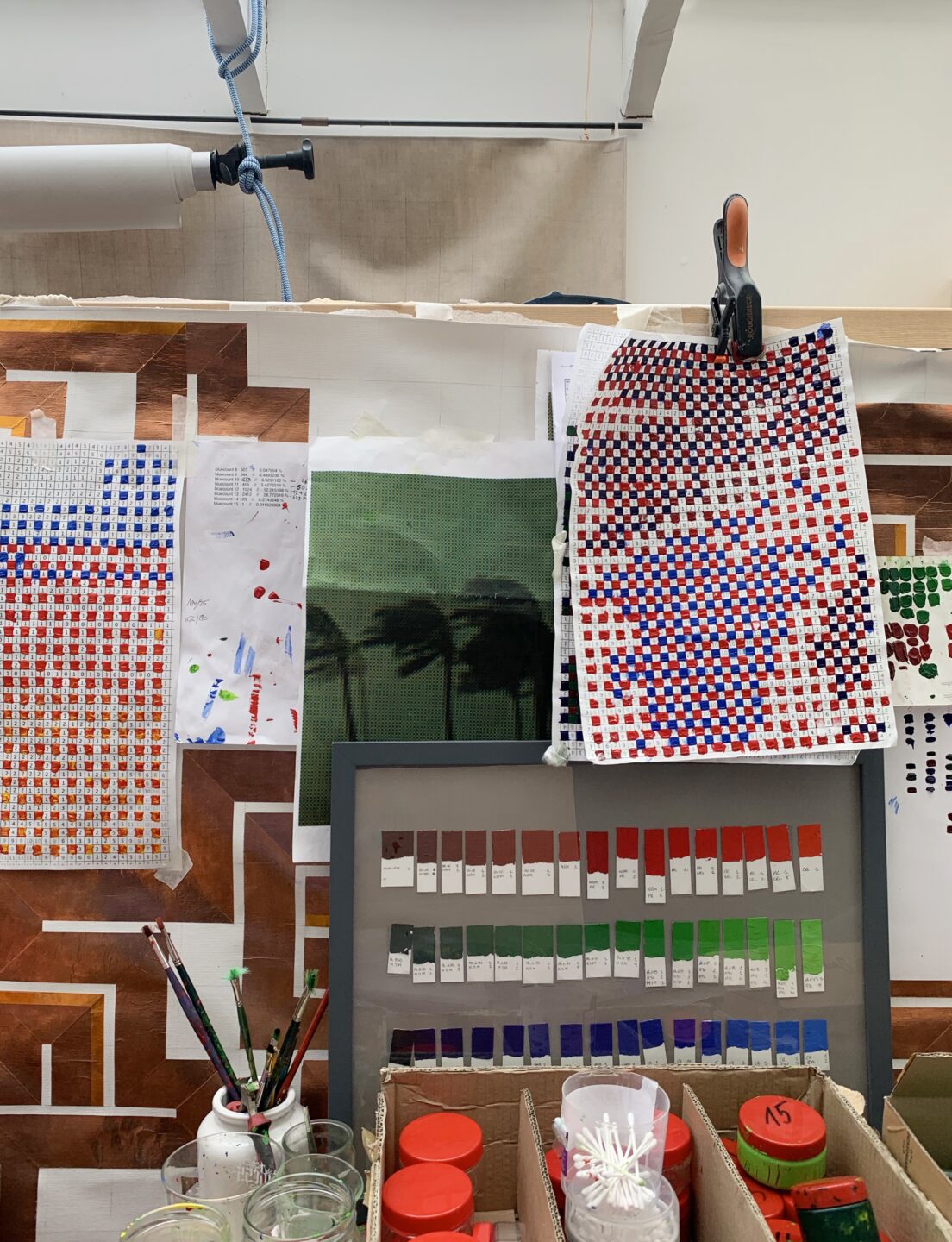
Troika, Studio view, 2024.
One of your recent exhibitions was in collaboration with Cécile B. Evans “In a forest of red, green and blue” in the max goelitz gallery in Munich. Especially your works “Forest Filled with Pines and Electronics” give an interesting impression of your interpretation of systems and how human-built algorithms can impact our perception of nature. How would you describe this division but also this reciprocal exchange of technology and nature? What does reality mean in that context?
The representational canon of natural scenery has been updated from sublime landscape painting to an avalanche of tele-recorded footage depicting natural disasters, replacing reflection with detachment.
Worldwide, one billion networked cameras continuously capture our reality, generating vast data whose volume can only be processed by machines. The cameras’ constant gaze has become a prism by which humanity distances itself from environmental catastrophes. Rather than alerting, the sheer volume of images desensitizes, making reality feel abstract.
The paintings titled ‘Forest filled with pines and electronics’ depict stills taken from footage of forest fires that were recorded by CCTV cameras. We developed a paint pallet of sixteen shades of red, green, and blue, manually emulating the way a raw digital image is constructed, calibrating our own and the viewer’s sensibilities to machine vision.
In reference to a CCTV camera that was part of a wildfire prevention system falling prey to the flames that it recorded, the paintings’ grid systems remain incomplete; the carefully developed RGB palette partially melted to reveal its constituent pigments.
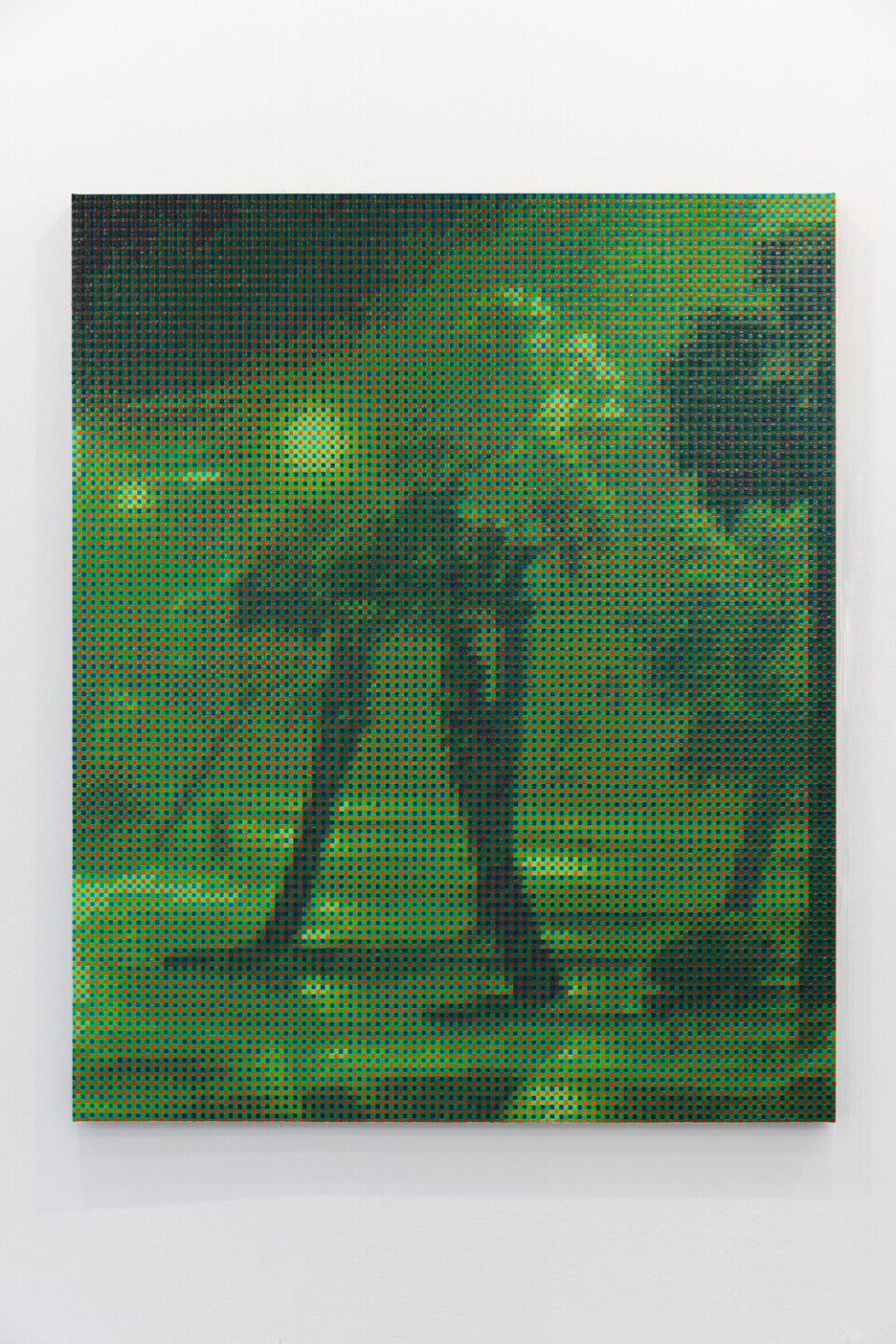
Troika: Irma Watched Over by Machines, 2021. Courtesy of max goelitz. Copyright the artists.
Photo: Studio Troika
You show a lot of interferences within your artworks, be it the blur between nature and algorithms, or the combination of a hyper-digitalized world and our deep cultural history. What inspires you to explore the impact of technology, progress and the processing of information on our reality, nature and the human mind?
Technology is a driving force in shaping contemporary society. The digital world isn’t confined to the screen; it conditions every aspect of our lives, from how we communicate to how we shop and travel.
Digital tools influence not only how we see and relate to our surroundings but also how we shape them.
We are interested in the shifting boundaries between nature and artifice, the real and the romanticised, the living and non-living, us and the other.
As virtual simulations of the world look more and more life-like, we increasingly take them for the world itself, in the process making the world more like the simulation and the simulation more like the world.
You will not only join us at Art Düsseldorf in 2024 but will also open a solo exhibition at MAK Contemporary in Vienna from May 1st. What can visitors anticipate from your upcoming artworks and exhibitions this year?
The immersive spatial installation Terminal Beach, conceived for the MAK, focuses on multi-layered forms of non-human intelligence during a time of climate change.
Our permanent living outdoor artwork, ‘Third Nature’, is a landscape at the intersection of virtual and material worlds for which we planted 15 trees in the formation of a digital tree library. It will be inaugurated at Cambridge University this summer.
We are looking forward to returning to the Rhineland for the opening of our solo exhibition ‘Pink Noise’, curated by Dehlia Hannah and Nadim Samman, at the Langen Foundation on September 1st. The exhibition explores the porous boundary between nature and technology, showcasing how digital systems represent and construct our environment through immersive installations, sculpture, film, and painting.
The artist collective Troika will be represented at Art Düsseldorf 2024 by max goelitz gallery.
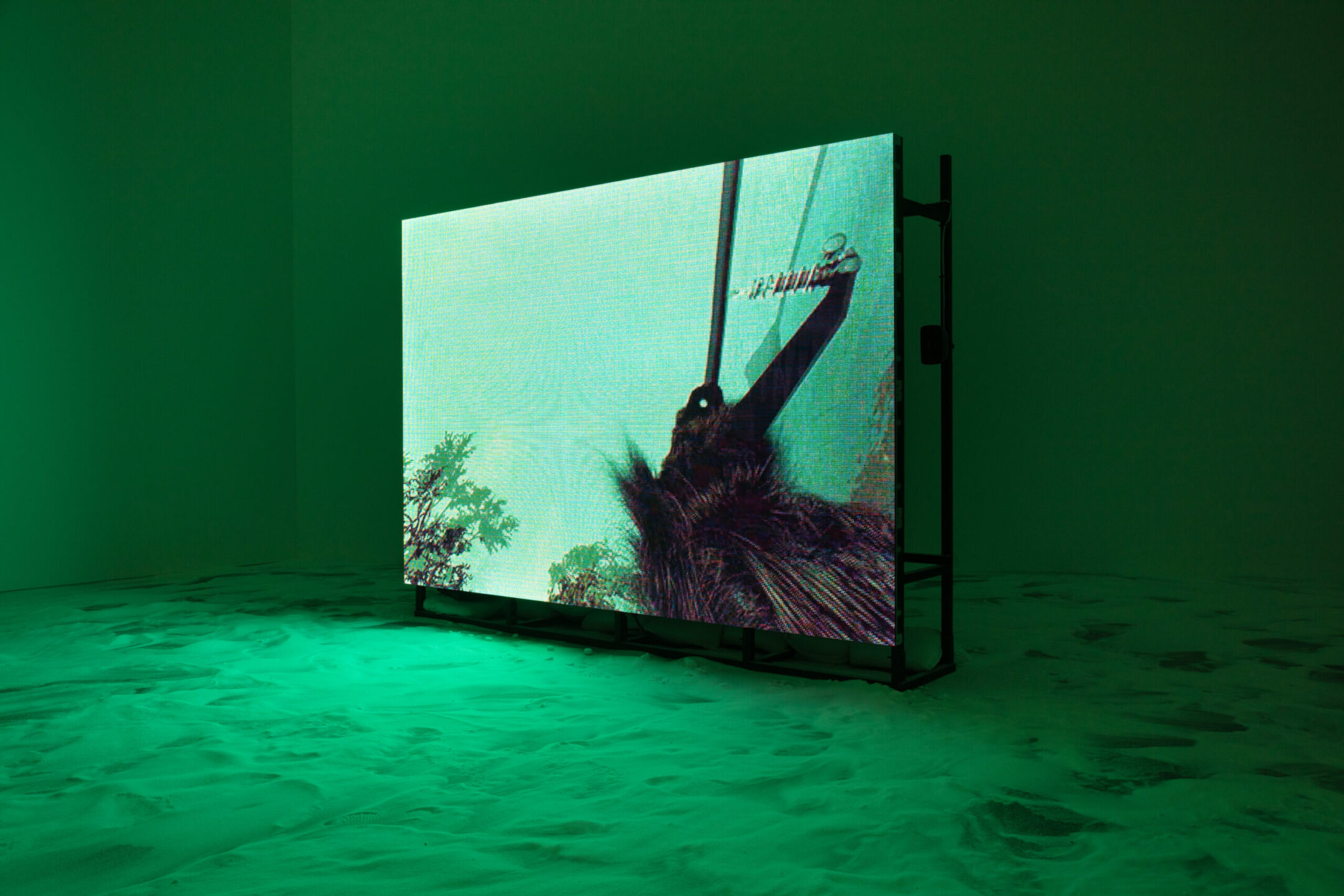
Troika: Terminal Beach, 2020. Courtesy of Espacio Arte Abierto.
Photo: Studio Troika.